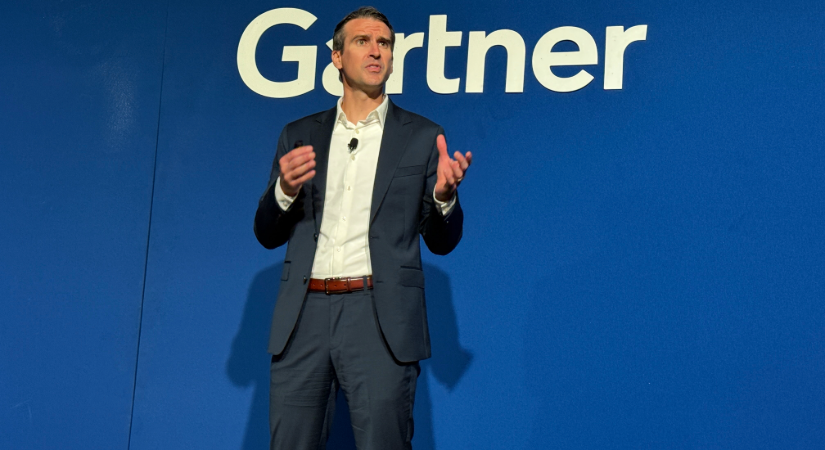Gartner Says One-third of Finance Staff Will Occupy “Shared Jobs” by 2029, with AI and an Employee Performing a Single Role Together
- Inno-Thought Team

- Apr 29
- 3 min read
Q&A with Amanda Joseph-Little, Vice President and Team Manager in the Gartner Finance practice

New types of shared workflows between AI and finance professionals will transform more traditional job roles and ways of working. Because of this, Gartner predicts that by 2029, one-third of finance staff will occupy shared jobs, in which AI and a person are responsible for performing a single job role together.
Ahead of the Gartner CFO & Finance Executive Conference in National Harbor, we spoke with Amanda Joseph-Little, Vice President and Team Manager in the Gartner Finance practice, who provided insight on what this means for finance leaders, and how this new collaboration will impact talent planning.
Q: How are jobs shared between finance employees and AI?
A: Shared jobs reframe the concept of a job from something that is held by a person to something that can be carried out by both AI and a person together. With shared jobs, AI and the person are dependent on one another to perform work successfully.
Shared jobs in finance come in two forms depending on the nature of the dependency between AI and the person, managerial model and the competitive model. Both are high-risk, high-reward roles with the potential for exponentially high impact on the business (see Figure 1).
With the managerial model, AI performs repetitive, manual tasks while the human manages AI’s work and ensures its quality. The person is dependent on AI to ensure efficient completion of high-volume work at a rapid pace, and AI is dependent on the human to ensure accuracy and performance improvement over time.
The competitive model involves both human and AI analyzing data simultaneously, and comparing their outputs to generate better insights and learning from each other. This model works to substantially improve the quality of decisions using a collaborative workflow and continual feedback loop, with AI and the human improving one another’s work and decision making through healthy competition.
Figure 1: The Two Models of Shared/Human AI Jobs in Finance

Q: What are the labor market implications for shared jobs?
A: Shared jobs change the nature of job responsibilities and the work performed by finance employees, especially at the entry and midlevels. Basic, more transactional analytical work is absorbed by AI counterparts, creating a new generation of sophisticated entry-level employees that build and manage simple automated processes. Midlevel employees will own strategic work, such as automating complex processes and business partnering, that was often neglected due to capacity and capability constraints.
Shared jobs will also evolve and expedite changes to the value that finance provides, requiring major shifts in human resource investment. Entry and midlevel positions will move away from transactional work and toward AI-supported analysis and decision-making support.
Headcount shifts will gradually change the shape of the finance function from a pyramid to a diamond as the number of entry-level roles and manager spans of control shrink. The result is very few entry-level roles supporting basic operations, a relatively high number of midlevel roles and few finance leaders.
Q: How should companies develop their current and future staff for this?
A: Transitioning to a shared job structure necessitates a reprioritization of finance skills, with less value placed on core finance skills and knowledge and more focus on skills that enable AI and humans to work with — and for — one another. With new skills, finance teams can use AI as a co-worker to help execute simple tasks and make decisions.
Companies need to prioritize three critical skill sets for shared jobs to succeed:
AI enablement
AI translation
AI monitoring
AI enablement efficiently combines knowledge of finance with AI tools, data science knowledge and statistical skills. AI translation is the interpreting and explaining of AI outputs to leaders, even when predictions fluctuate from expectations. AI monitoring ensures technology stays within its guardrails by fact-checking outcomes, detecting model drift, preventing bias and ensuring regulatory compliance.
These skills exist in finance to varying degrees today, but their importance and unique application in shared jobs means that finance leaders must invest further in hiring and development.
The expanding talent pool needed to fulfill shared jobs also means that finance leaders need dual development strategies. The first to support development in AI skills and the second to support core finance skills and knowledge. The decrease in entry-level finance roles further highlights the need for dual strategies because it disrupts talent pipelines for midlevel roles. With less entry-level talent to promote into shared jobs, finance must broaden its search for midlevel candidates across both development profiles.













































Comments